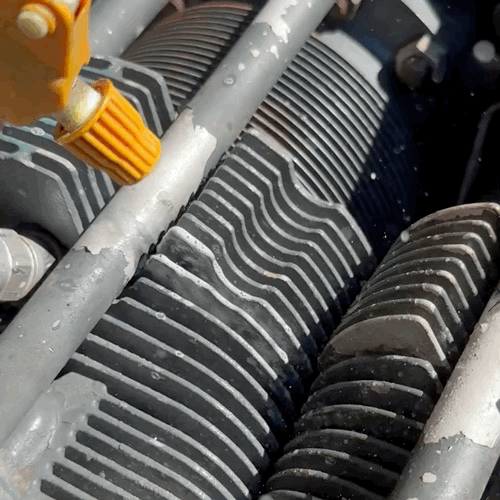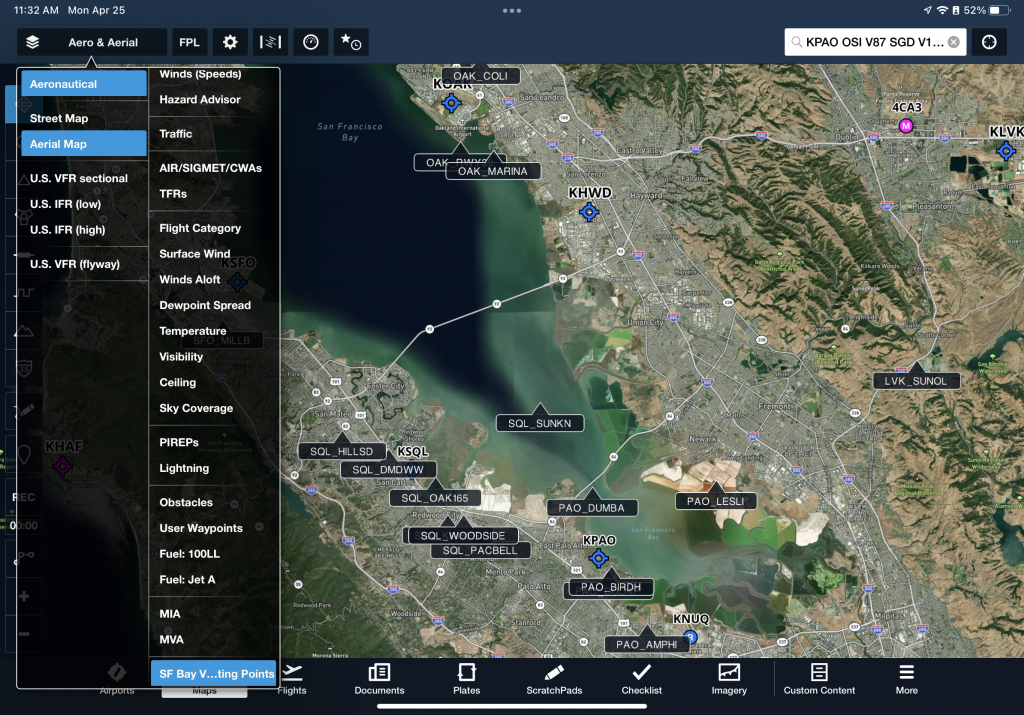Aeronautical decision-making occurs through all stages of flight. This particular situation happened on the initial climb.
While departing from San Carlos Airport (KSQL) in my airplane (N81034) to practice night instrument approaches, CFI Ed1 and I noticed our Vy pitch was 8° instead of the normal 12°.
The plane had not shown any abnormalities in our preflight, run-up, or takeoff checks. And yet, pitch + power ≠ performance.2
Perceiving this issue was the first step in the FAA’s 3P model.
The 3P Model

The 3Ps is a closed-loop analysis meant to be done continually throughout a flight.
Perceive with PAVE
Many pilots are familiar with the PAVE acronym. It can help identify hazards both before and during a flight.
On this night flight, we perceived these items after discovering the shallow climb angle on the departure leg:
- Pilot: Two pilots flying together can cause miscommunications on who is currently flying.
- Aircraft: Climbing at an abnormally shallow angle, especially for a calm and chilly night.
- EnVironment: Standard hazards associated with night flight. Otherwise, a calm night with a full moon.
- External Pressures: None were identified. Neither of us needed the night hours, nor were we close to currency lapsing.
Process with CARE
A lesser-known acronym is CARE. It can help review hazards and evaluate risks.
At the point we began to process, we had just turned cross-wind. Using CARE to assess the new hazard,3 our climb angle, looks like this:4
- Consequences: An engine not developing full power is an issue of unknown magnitude. A complete engine failure is possible.
- Alternatives: A warm night or high DA could look similar to this issue.5
- Reality: Any engine issue at night is much riskier than in the day. Even a partial loss of power could be harrowing.
- External Pressures: We fly this plane all the time and have never had issues. What are the odds it happens on climb-out at night?
The FAA asks: “Why must I CARE about these circumstances?” In this case, we cared because the risk of an engine failure at night is unacceptably high.6
Perform with TEAM
TEAM is about as little-known as CARE. It can help choose and implement risk controls.
At this point, we were flying the downwind leg. We could perform good risk management using any of the following:
- Transfer: Since we’re already flying, there’s no way to transfer the risk.
- Eliminate: Get down to the airport as soon as possible.
- Accept: Perhaps a night of flying is worth the risk of an engine failure?7
- Mitigate: If we were further away, perhaps climbing for better glide range could have helped mitigate the risk of an engine failure.
Since we were still within glide of the runway, we requested a clearance to land and taxied back to parking. We grounded the airplane until maintenance could inspect it.
Aeronautical Decision-Making Outcome
Both Ed and I were pleased with our aeronautical decision-making. Regardless of what maintenance found, we perceived, processed, and performed the best course of action we could.
We talked about two big phrases on the way home:
It’s better to be on the ground wishing you were in the air, than in the air wishing you were on the ground.
– Anonymous
and
A superior pilot uses his superior judgment to avoid situations which require the use of his superior skill.
– Frank Borman
Let’s all keep trying to be superior pilots,
Jack
Since aeronautical decision-making only uses information available at the time, it doesn’t really matter what the issue was. But, for the curious, maintenance found a hole in the cylinder. The entire engine was then replaced for TBO.

- Edward Abraham accompanied me for instrument training in Minnesota and knows my plane very well. ↩︎
- You may have heard the expression pitch + power = performance. If you haven’t already, you should memorize the sight picture for a Vy climb in VFR and the exact pitch attitude for IFR. ↩︎
- The other hazards were known before the flight and did not require re-evaluation. ↩︎
- I’d love to say we explicitly used the acronym, but instead, we leveraged our experiences from teaching what this situation could entail. I think it’s fair to call this preplanning. ↩︎
- Maybe? Seems unlikely. ↩︎
- With more time, we could have reasoned through a FRAT like in Risk Assessment: Student Solo with Showers in the Vicinity. ↩︎
- As we say in Minnesota, oofta. ↩︎
- The Plausible Useful Idea of this post: Use bubbles to find holes! For example, if you have an inflatable with a leak, cover it with a bit of soapy water and squeeze to see where bubbles appear. ↩︎

